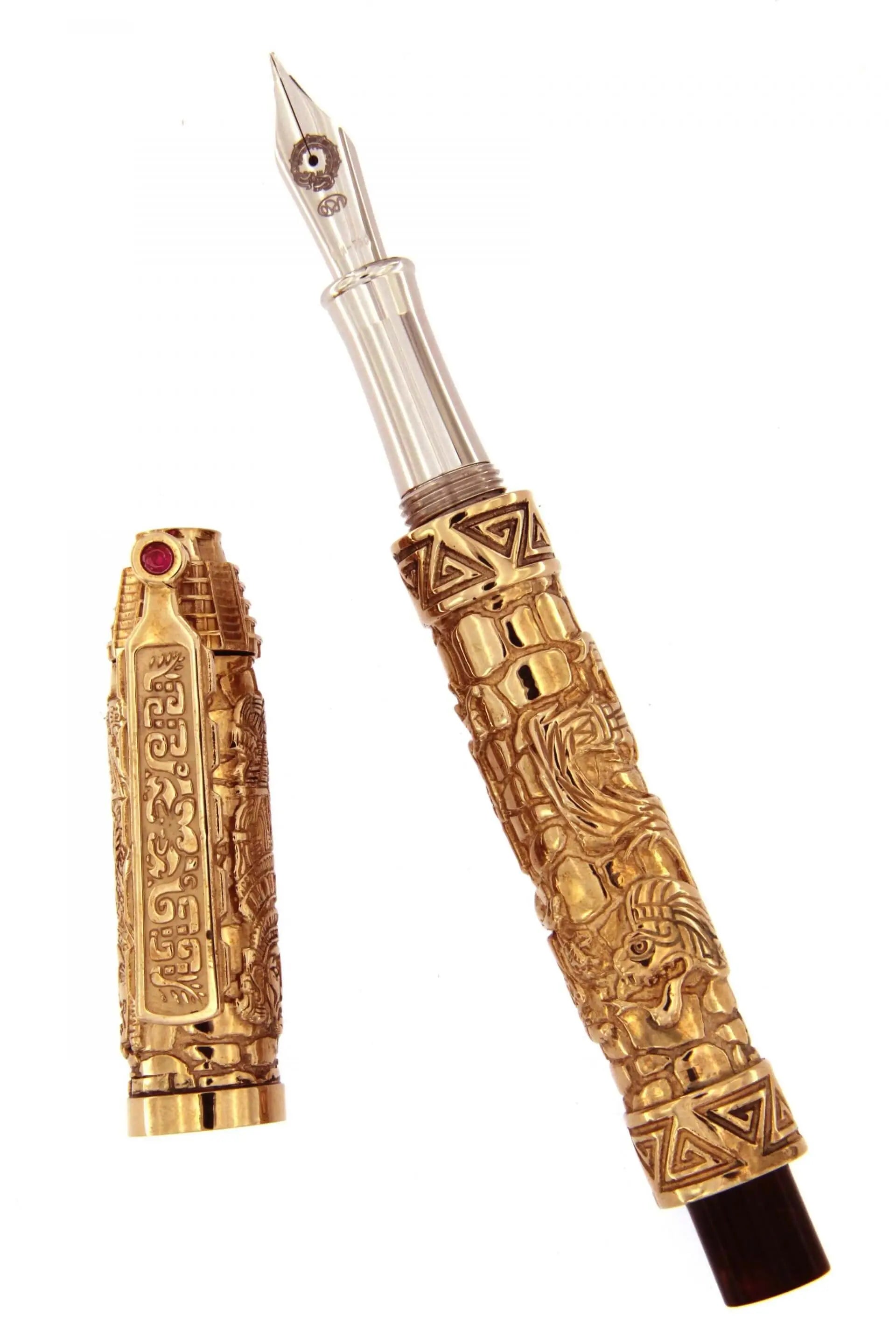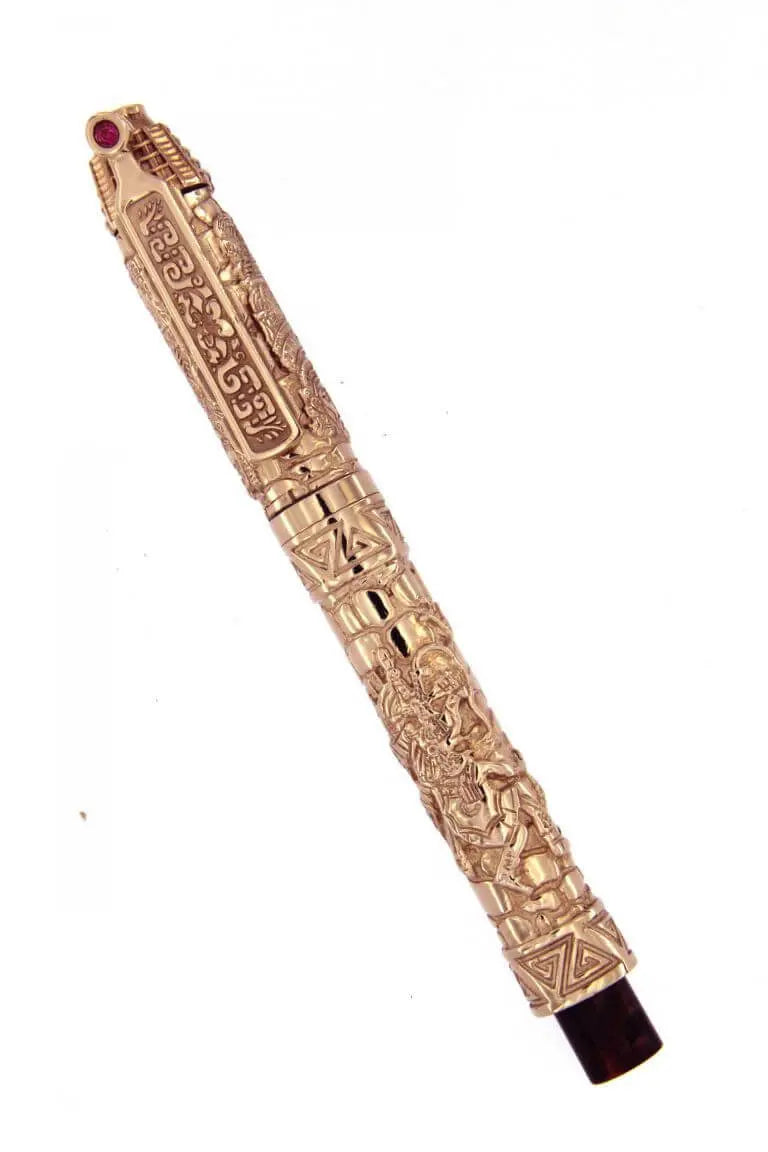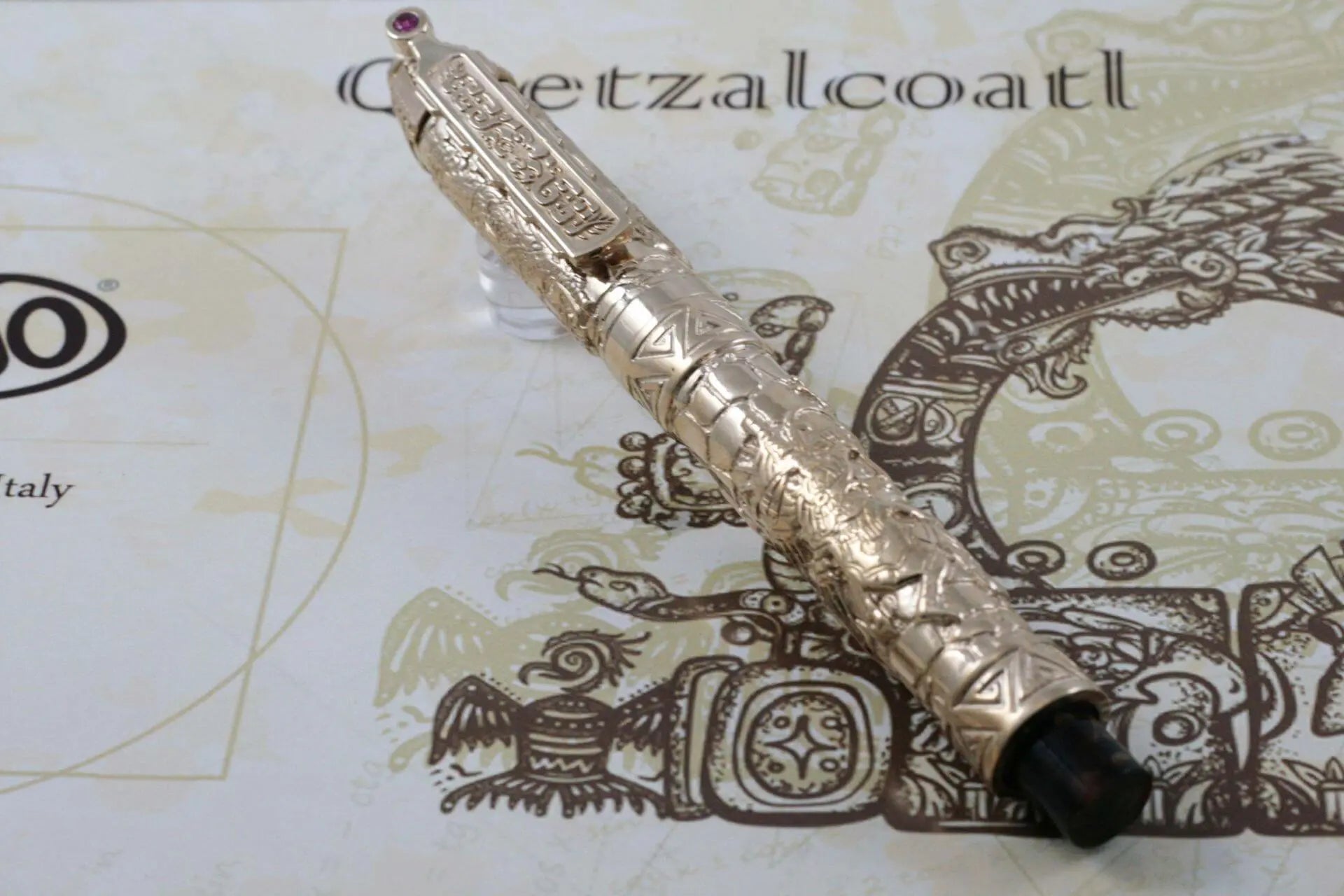


FOUNTAIN PEN QUETZALCOATL (AZTEC CIVILIZATION) BRONZE
World Wide Shipping
100% Return Guarantee
Customer Service
Secure Payment
Aztec Civilization
Quetzalcóatl is the Aztec name of the feathered serpent god of ancient Mesoamerica, one of the most important deities for many Mexican and Central American civilizations. Among the Aztecs, whose beliefs are well documented, Quetzalcoatl is revered as the god of wind, Venus, dawn, merchants and the arts, crafts and knowledge.The name "Quetzalcoatl" comes from the nāhuatl "quetzal [li] -cōhuātl". "Quetzalli" indicates something divine or precious (in some contexts it is intended as "beautiful", even not in body) while "Cōhuātl" means "Snake". According to some, it literally means Quetzal's snake with feathers (which refers to something divine or precious), although not everyone agrees. In fact, the Quetzal bird at the time was not called that. The various meanings referring to his name in other Mesoamerican languages are quite similar. The Mayans called it Kukulkán
Features
Freight and Delivery
Personal Advice
Choose options



FOUNTAIN PEN QUETZALCOATL (AZTEC CIVILIZATION) BRONZE
At Wonders of Luxury, we focus on exceptional craftsmanship, sustainability, and distinctive aesthetics. Our goal is to offer products that exceed your expectations and provide a seamless, satisfying shopping experience. When you shop with us, you can trust in our commitment to quality, reliability, and customer satisfaction, ensuring an effortless and rewarding journey.
"If you have to ask the price, you can't afford it." — J.P. Morgan
"I don't do fashion, I am fashion." — Coco Chanel
"I have the simplest tastes. I am always satisfied with the best." — Oscar Wilde

